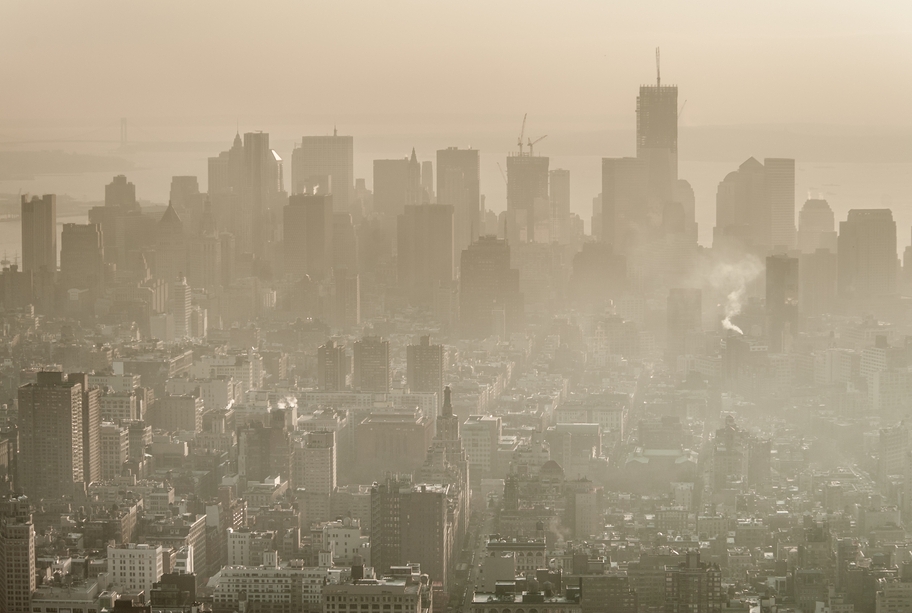Levels of air pollution defined as “good” by the Environmental Protection Agency (EPA) may still harm the lungs of cigarette smokers, according to a new study conducted by Weill Cornell Medicine and NewYork-Presbyterian investigators.
The study, published June 13 in the American Journal of Respiratory and Critical Care Medicine, shows that smokers with and without chronic obstructive pulmonary disease (COPD), a condition defined by obstruction to expiratory airflows that makes breathing difficult, are not safe from lung damage even when pollution levels are relatively low. The cells lining the small airways of the lungs in smokers respond abnormally to pollution, causing disease, while the cells of nonsmokers do not.
“One of the lessons of this study is, don’t smoke,” said senior author Dr. Ronald Crystal, chairman of the Department of Genetic Medicine and the Bruce Webster Professor of Internal Medicine at Weill Cornell Medicine.
Environmental diseases of the lung, whether caused by pollution or cigarette smoking, first affect the small airways, which are less than 2 millimeters in diameter. Visualize the lungs as an upside-down tree, with the trachea, or windpipe as the trunk, said Dr. Crystal, who is also a professor of genetic medicine at Weill Cornell Medicine and a pulmonologist at NewYork-Presbyterian/Weill Cornell Medical Center. The airways branch out from the trunk, becoming increasingly smaller.
“We hypothesized that pollution may affect the biology of the cells that line the small airways,” Dr. Crystal said. These cells, called epithelial cells, help to defend the lungs from pollution by producing mucus and moving unwanted particles out of the airways.
To investigate their hypothesis, the researchers recruited 158 volunteers from the New York City area, 29 of which were nonsmokers, 71 were smokers without lung disease and 58 were smokers with COPD. All participants agreed to undergo bronchoscopy, a procedure where a thin, lighted tube with a camera at the tip is inserted through the nose and into the small airways of the lungs. Using a brush inserted through this scope, the researchers took samples of small airway epithelial cells. Each person underwent bronchoscopy a maximum of four times over the course of a year.
The investigators then studied the small airway cells’ genetic information contained in the tissue samples. Genes, or sequences of DNA in the cell nucleus, provide instructions for the creation of proteins through an intermediary called messenger RNA (mRNA). The team measured gene expression, or the mRNA levels within epithelial cells.
They also evaluated levels of particulate matter, or air pollution, as reported by the EPA over the study period. Measurements ranged from 6.2 to 18 µg/m3, 30 days before each bronchoscopy. These levels the EPA consider good or moderate.
The investigators found that these pollution levels put the smokers’ epithelial cells under stress. This was illustrated by the dysregulation of gene expression within these cells. With dysregulation, some genes made more mRNA than they were supposed to (upregulation), while others made less (deregulation).
Specifically, 126 genes in smokers exposed to air pollution were upregulated, while 93 were downregulated. This dysregulation can lead to inflammation or cell damage indicative of respiratory disease such as COPD.
Dr. Crystal and his colleagues are following the smokers without COPD to see if they develop lung disease in the future. “Even at ‘safe’ or ‘good’ levels, smokers may be much worse off than nonsmokers with environmental pollution,” he said.
Funding for this study was provided by the National Institutes of Health (HL107882, HL113443, HL1189541, and T32HL094284) and Hoffmann-La Roche Ltd.

